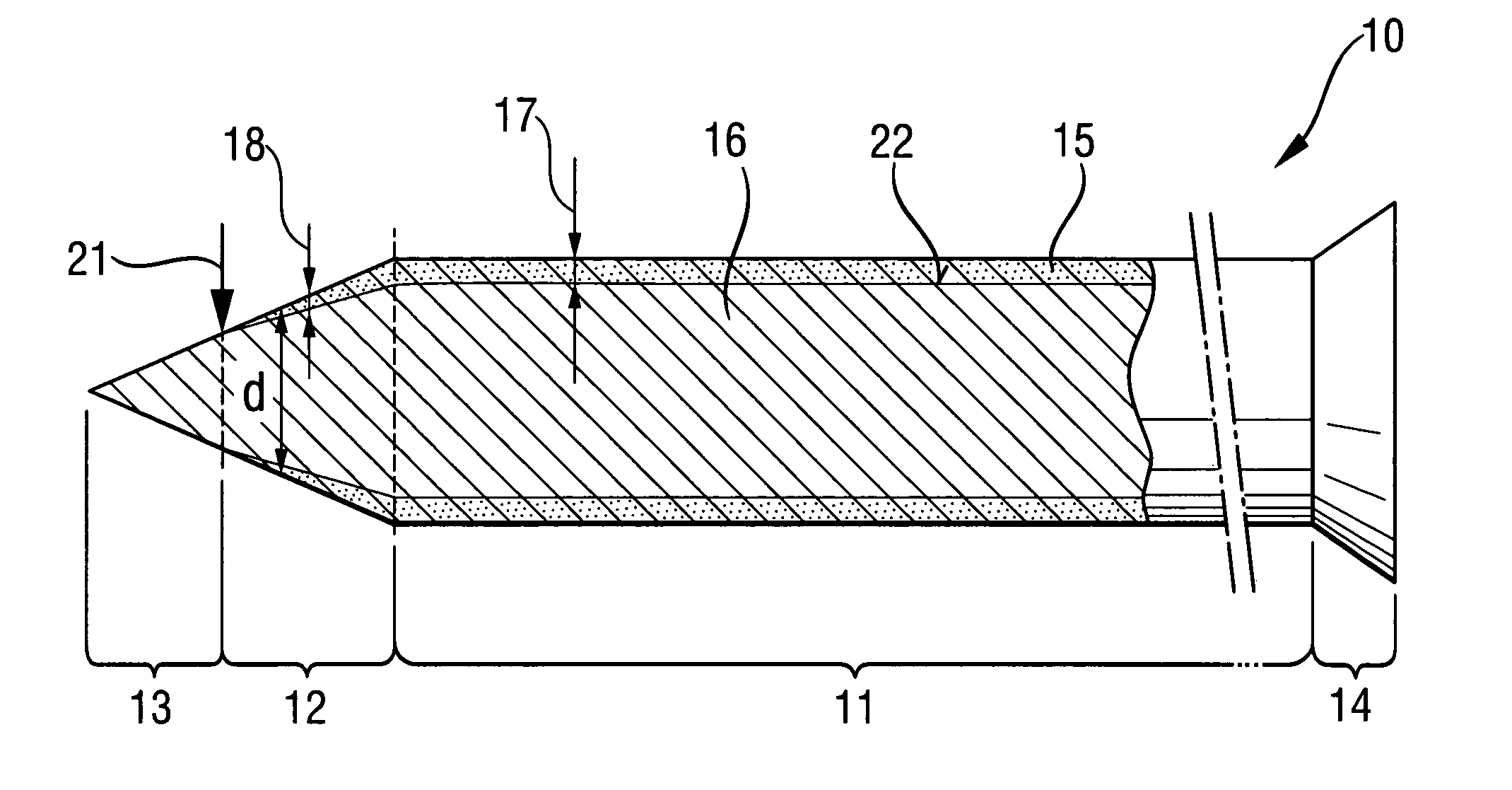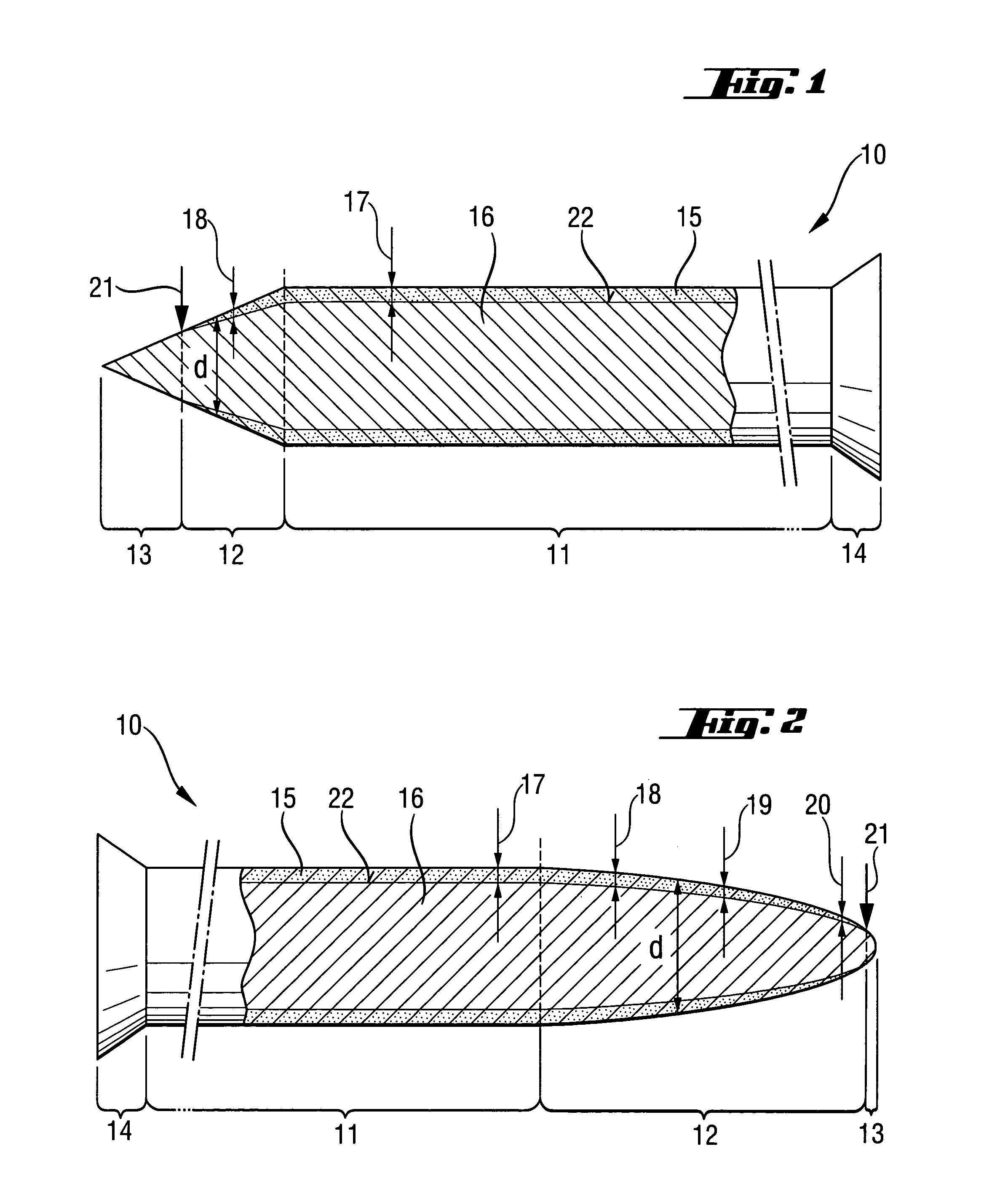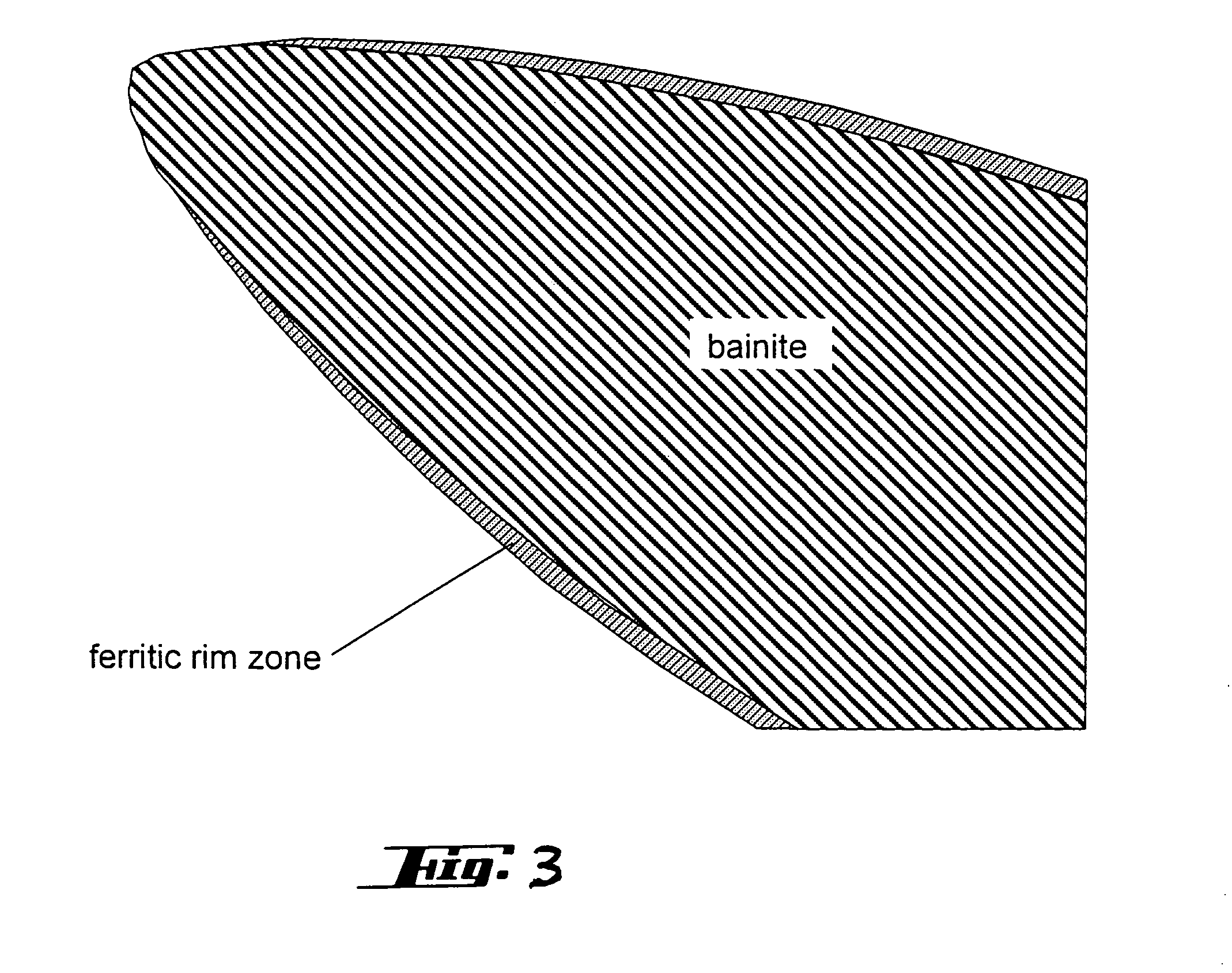Fastening element
a technology of fastening elements and fixing screws, applied in the direction of nails, screws, bolts, etc., can solve the problems of tip bending up and kinking
- Summary
- Abstract
- Description
- Claims
- Application Information
AI Technical Summary
Benefits of technology
Problems solved by technology
Method used
Image
Examples
Embodiment Construction
[0021]A fastening element 10 according to the present invention, which is shown in FIG. 1, is formed as a nail. The fastening element 10 has a head 14 and a stem 11 that adjoins the head 14. At its end remote from the head 14, the stem 11 has a tip 13. The fastening element 10 has a rim zone 15 extending over the stem 11 and a transition region 12 from the stem 11 to the tip 13. The rim zone 15 consists of ferritic decarburized steel having a Vickers hardness from 200 to 300 HV. However, the steel in the rim zone 15 can also have a hardness from 150 to 500 HV. The rim zone 15 is located outside of a core 16 that consists of bainitic or martensitic steel having a hardness of about from 550 to 700 HV. The thickness of the rim zone 15 in the region of the stem 11 amounts to about from 40 to 100 μm. However, this thickness can lie in a range from 20 to 200 rim. In the transition region 12, the thickness of the rim zone 15 is continuously reduced from a thickness 17 in the region of the ...
PUM
 Login to View More
Login to View More Abstract
Description
Claims
Application Information
 Login to View More
Login to View More - R&D
- Intellectual Property
- Life Sciences
- Materials
- Tech Scout
- Unparalleled Data Quality
- Higher Quality Content
- 60% Fewer Hallucinations
Browse by: Latest US Patents, China's latest patents, Technical Efficacy Thesaurus, Application Domain, Technology Topic, Popular Technical Reports.
© 2025 PatSnap. All rights reserved.Legal|Privacy policy|Modern Slavery Act Transparency Statement|Sitemap|About US| Contact US: help@patsnap.com



